To deploy UAVs for rapid medical aid, you'll need to select the right drone models based on your mission requirements and environment. Equip your UAVs with lightweight, high-impact medical supplies packed in protective containers. Establish secure communication systems between drones and ground control, ensuring reliable data transmission. Train your operators in both UAV piloting and basic medical aid, including scenario-based exercises. Navigate legal and ethical considerations by obtaining necessary permits and implementing protocols for patient confidentiality. By following these steps, you'll create an effective UAV-based medical aid system. Explore each aspect further to maximize your program's impact and efficiency.
Selecting Appropriate UAV Models
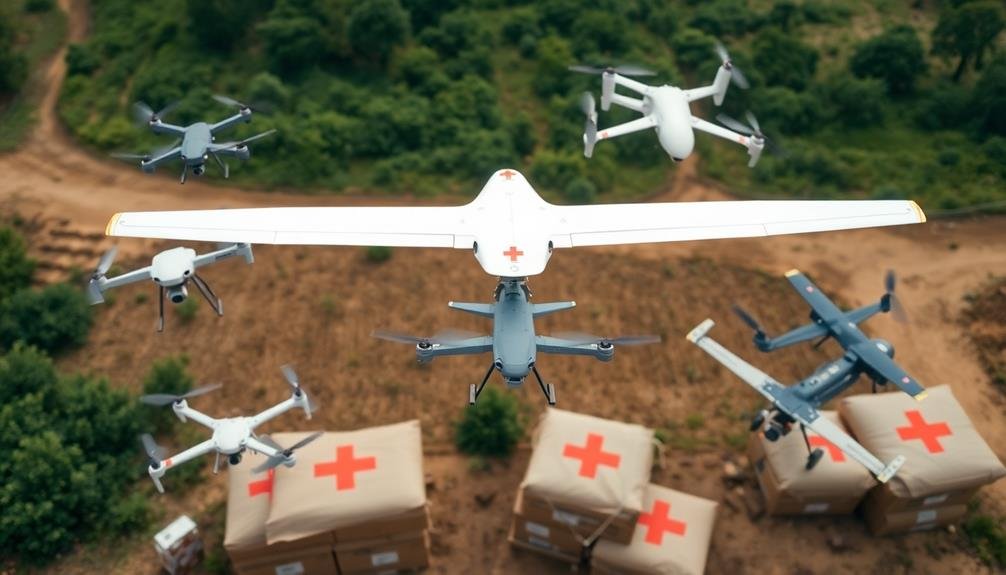
When selecting appropriate UAV models for medical aid deployment, it's vital to evaluate the specific mission requirements. Consider factors like payload capacity, flight range, and operational environment.
For urban areas, choose compact drones with vertical takeoff and landing capabilities. In rural or remote regions, opt for fixed-wing models with longer flight times and extended range.
Assess the type of medical supplies you'll transport. Lightweight items like medications or small equipment can be carried by smaller drones, while heavier loads like blood products or defibrillators require larger, more powerful models.
Don't forget to factor in the climate and weather conditions of your operational area. Select UAVs with appropriate weatherproofing and wind resistance for reliable performance.
Consider the level of autonomy needed. Some missions may require fully autonomous flight, while others benefit from manual control. Choose models with obstacle avoidance systems and reliable GPS for safer operations.
Equipping Drones With Medical Supplies

Properly equipping drones with medical supplies is vital for successful aid missions. You'll need to carefully consider the payload capacity of your chosen UAV and prioritize the most important supplies.
Start by focusing on lightweight, high-impact items such as medications, bandages, and basic diagnostic tools. For emergency response, include items like epinephrine auto-injectors, tourniquets, and trauma dressings.
If you're supporting ongoing medical care, consider adding insulin, antibiotics, and portable blood pressure monitors. Don't forget to pack supplies in waterproof, shock-resistant containers to protect them during flight.
Organize your medical payload efficiently to maximize space. Use modular compartments or custom-designed inserts to keep supplies secure and easily accessible.
If you're operating in extreme temperatures, incorporate temperature-controlled storage for heat-sensitive medications. Consider including a tablet or smartphone with preloaded medical instructions and telemedicine capabilities. This can help ground personnel administer aid effectively.
Establishing Communication and Control Systems

A drone's effectiveness in medical aid missions hinges on robust communication and control systems. You'll need to establish reliable links between the UAV and ground control stations. Implement encrypted radio frequency (RF) communications to guarantee secure data transmission and protect sensitive medical information.
Consider using satellite communications for extended range operations in remote areas.
Set up a user-friendly control interface that allows operators to easily navigate the drone and monitor its status. Integrate real-time video feeds and telemetry data to provide situational awareness. Incorporate automated flight modes, such as waypoint navigation and return-to-home functions, to enhance efficiency and safety.
You should also implement fail-safe mechanisms to handle potential communication failures. Program the drone to execute pre-defined actions, like hovering in place or returning to base, if it loses contact with the control station.
Install redundant communication systems to minimize the risk of complete signal loss.
Don't forget to comply with local regulations regarding drone operations and radio frequency usage. Obtain necessary permits and guarantee your communication systems meet required standards.
Regular testing and maintenance of these systems will help assure reliable performance during critical medical aid missions.
Training Operators for Medical Missions
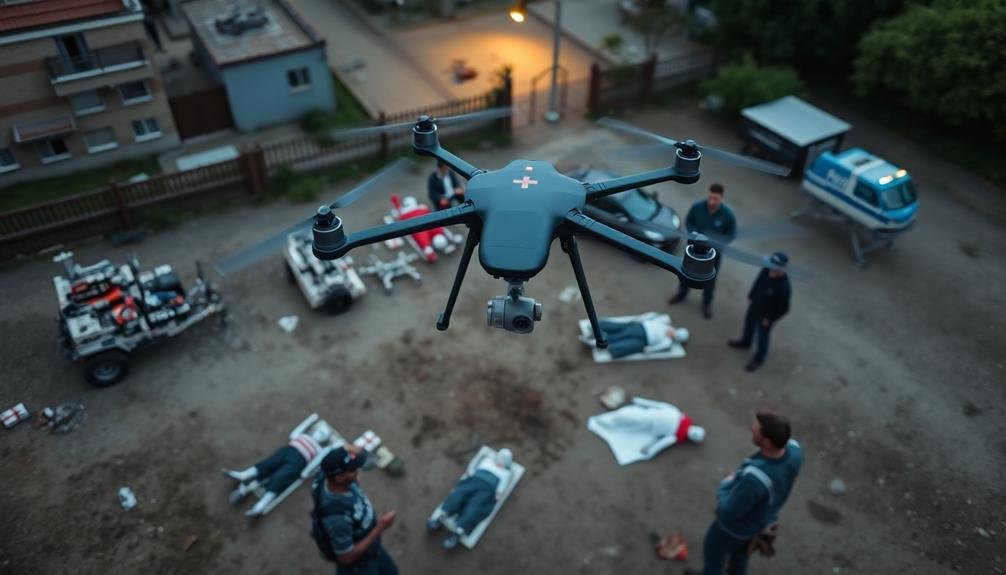
With communication systems in place, your focus should shift to preparing skilled operators for medical missions. Develop a thorough training program that covers both UAV piloting and medical aid fundamentals. Guarantee operators understand the unique challenges of delivering medical supplies and equipment in various environments.
Begin with intensive UAV flight training, including:
- Basic flight maneuvers and advanced techniques
- Navigation and obstacle avoidance
- Emergency procedures and troubleshooting
- Payload management and delivery methods
Next, provide medical training specific to UAV operations. Teach operators about proper handling of medical supplies, maintaining sterile conditions, and understanding the urgency of different medical situations.
Include scenario-based training to simulate real-world missions, allowing operators to practice decision-making under pressure.
Implement a rigorous certification process to guarantee operators meet the necessary standards for both piloting and medical knowledge. Regular refresher courses and ongoing evaluations will help maintain skill levels and introduce new technologies or procedures.
Navigating Legal and Ethical Considerations
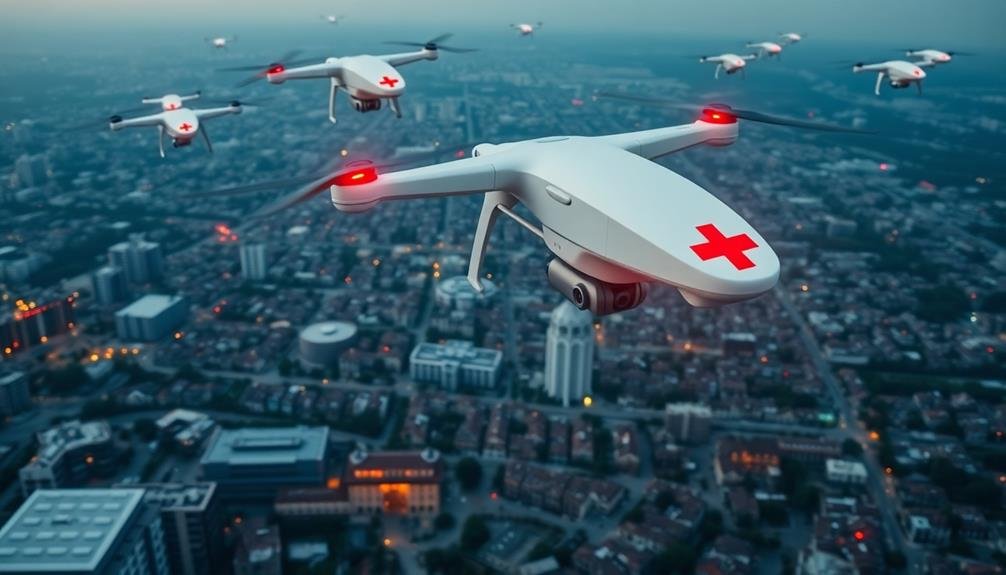
Despite the potential benefits, deploying UAVs for medical aid involves maneuvering a complex web of legal and ethical considerations. You'll need to navigate airspace regulations, privacy laws, and consent issues. Familiarize yourself with local and international aviation rules, as they vary by country and region. Obtain necessary permits and certifications for your UAV operations.
Consider privacy concerns when capturing aerial footage or data during missions. Implement strict protocols to protect patient confidentiality and secure sensitive medical information. Assure you have informed consent from individuals receiving aid via UAVs.
Address ethical questions surrounding autonomous decision-making in medical deliveries. Establish clear guidelines for prioritizing patients and allocating resources. Develop contingency plans for technical failures or unexpected situations that may compromise patient safety.
Engage with local communities and stakeholders to build trust and address cultural sensitivities. Be transparent about your UAV operations and their intended purposes.
Stay updated on evolving regulations and ethical standards in the rapidly changing field of medical UAVs.
Frequently Asked Questions
How Effective Are UAVS in Reducing Response Times for Medical Emergencies?
You'll find UAVs highly effective in cutting response times for medical emergencies. They can bypass traffic, reach remote areas quickly, and deliver essential supplies. Their speed and versatility make them invaluable for rapid medical aid.
What Weather Conditions Can Impact the Performance of Medical Aid Drones?
You'll find that strong winds, heavy rain, snow, and extreme temperatures can hinder medical aid drones. They're also affected by low visibility from fog or smoke. Lightning storms pose risks too. Always check weather forecasts before deployment.
How Do Communities Typically React to the Introduction of Medical UAV Services?
You'll often find mixed reactions in communities. Some people are excited about faster emergency care, while others worry about privacy or noise. Gradually, most come to appreciate the benefits as they see lives saved.
What Are the Maintenance Requirements and Lifespan of Medical Aid Drones?
You'll need to regularly maintain your medical aid drones, including battery checks, motor inspections, and software updates. With proper care, they'll typically last 3-5 years. Lifespan varies based on usage frequency and environmental conditions.
How Do Medical UAVS Compare to Traditional Ambulance Services in Terms of Cost?
You'll find medical UAVs are often more cost-effective than traditional ambulances. They've got lower operational expenses, don't need full-time staff, and can reach remote areas quickly. However, they can't transport patients or provide hands-on care.
In Summary
You've now got the tools to deploy UAVs for rapid medical aid. Remember, success hinges on choosing the right drones, equipping them properly, setting up robust communication systems, and training skilled operators. Don't forget to navigate the legal and ethical landscape carefully. With these elements in place, you're ready to launch life-saving missions. Your UAV fleet can now make a real difference in emergency medical situations, potentially saving countless lives.

As educators and advocates for responsible drone use, we’re committed to sharing our knowledge and expertise with aspiring aerial photographers.
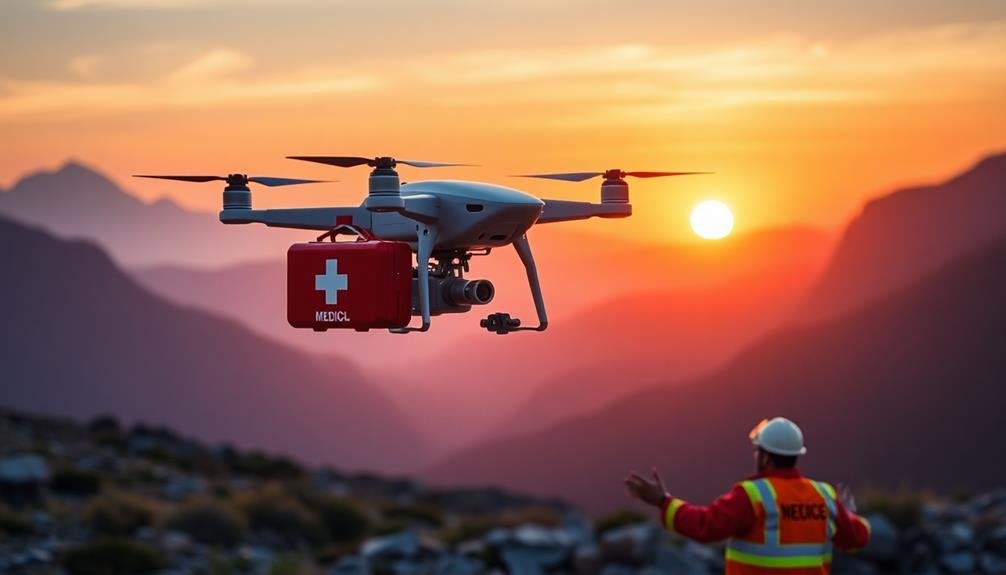
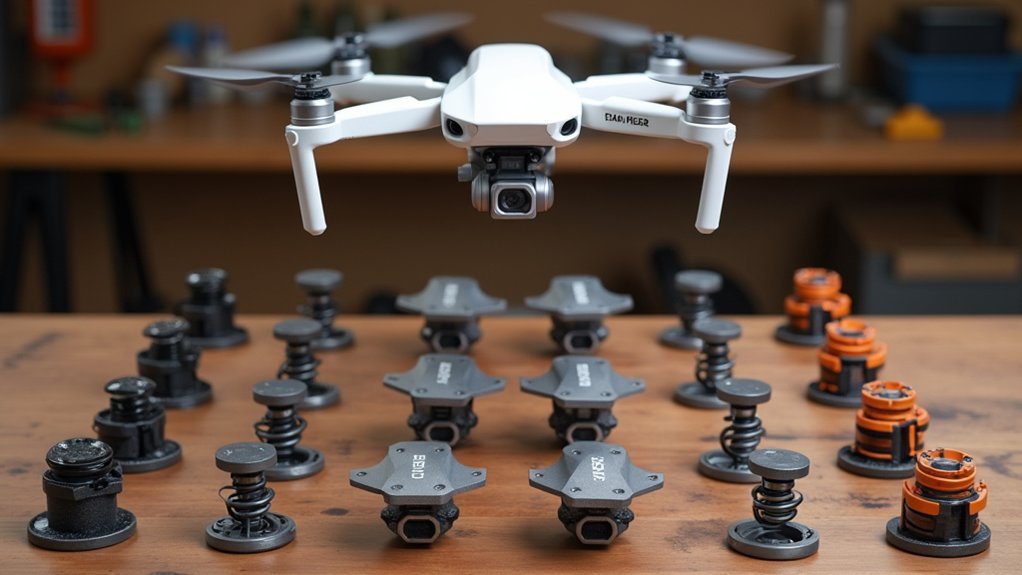
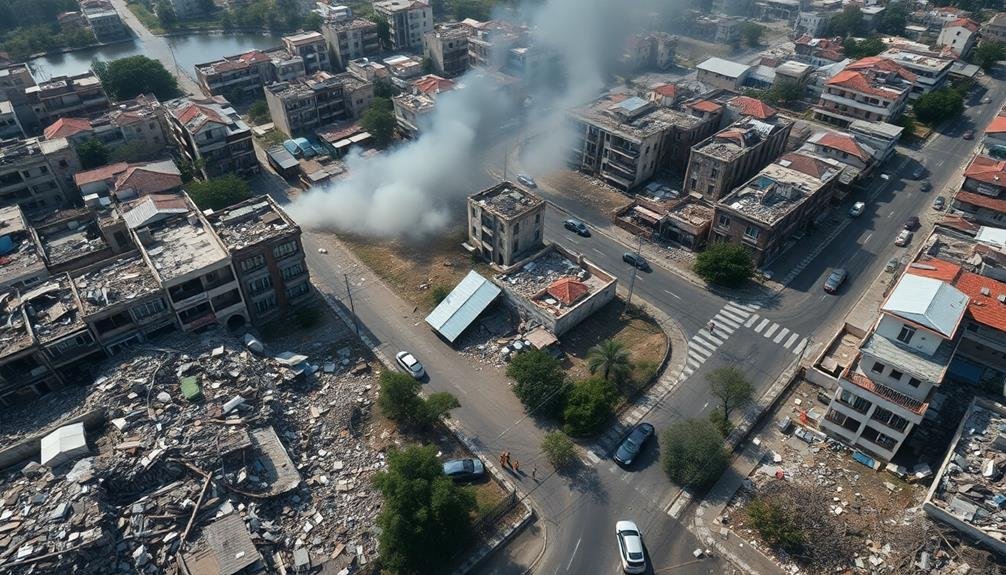
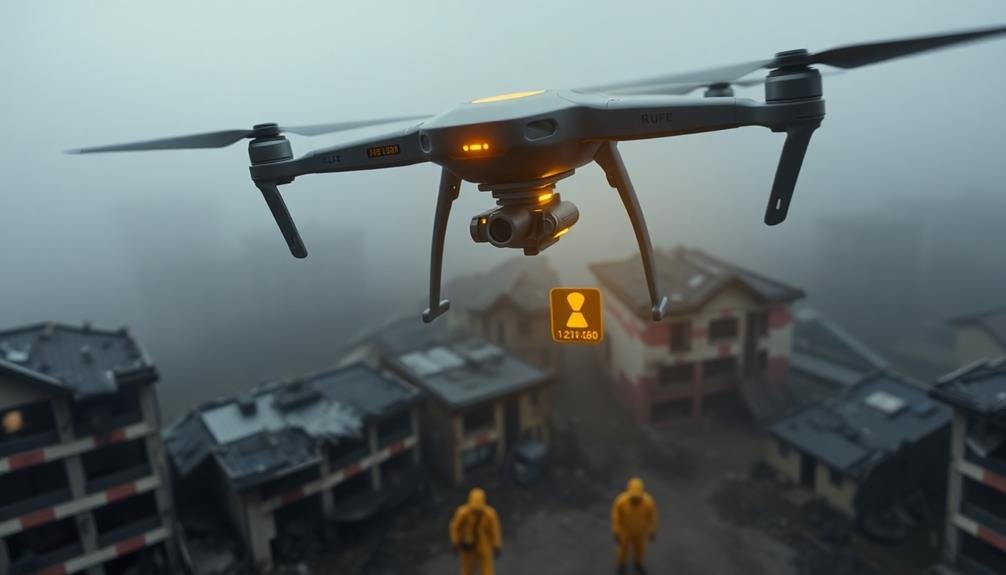
Leave a Reply